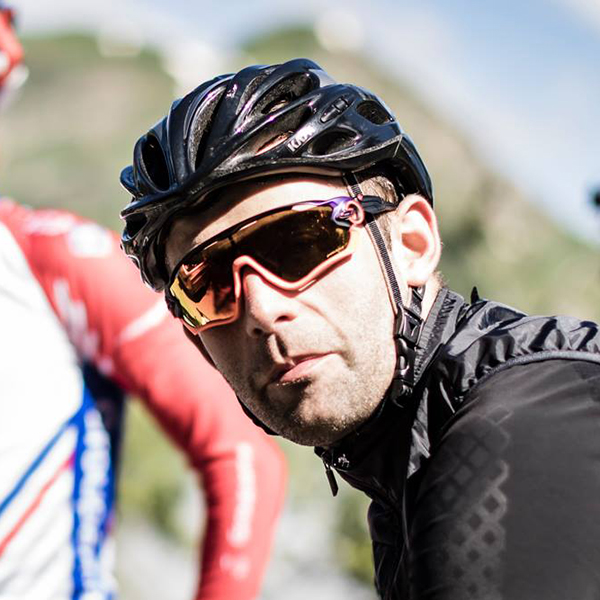It’s dawning on me that I might have drawn the short straw this year, having run our 2024 bib tights and waterproof jackets tests.
Many try to avoid cycling in the rain and frozen temperatures, but they are inevitable when riding in the winter season (at least where I live).
As always when testing several similar products in close succession, I got a great insight into how small variations in design and construction can add up to big differences in performance on the bike.
So if you’re looking to buy a new waterproof jacket this winter, don’t spend a penny until you’ve read up on these six crucial lessons.
1. Technical fabrics are great, but they’re not magical
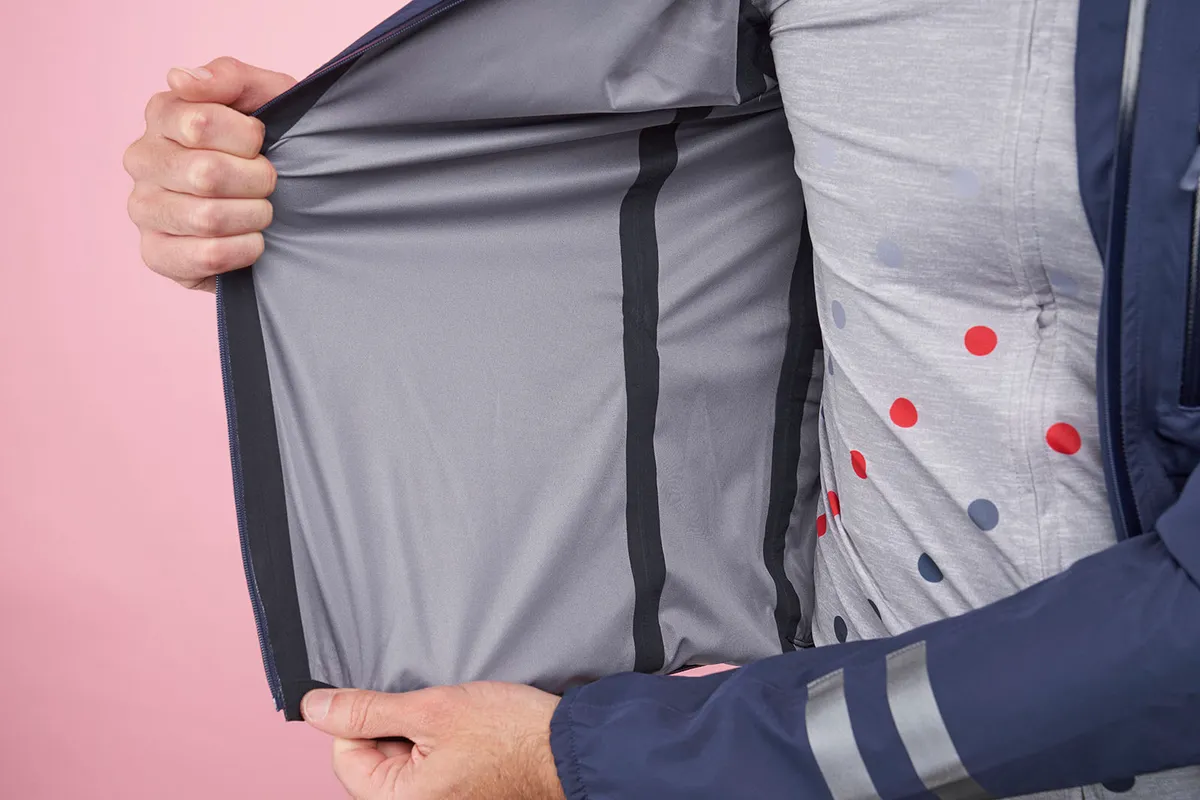
Waterproof fabrics, such as Gore-Tex Active, Polartec NeoShell and many own-brand alternatives, are sold on their claimed ability to keep water out and allow moisture to escape.
The fact is they can’t do both very well at the same time.
There are a few reasons for this, but it depends largely on the relative conditions inside and outside of the fabric.
In short, if there’s no difference in conditions, there’s no ‘pressure gradient’ for the atmospheric particles to move along, so while rain may not be able to penetrate the fabric, excess moisture and heat can’t escape.
In practice, the jackets I’ve tested this year have all breathed well when the conditions outside have been cold and dry – as I’ve built up body heat and sweat, the fabrics have allowed it to diffuse outwards.
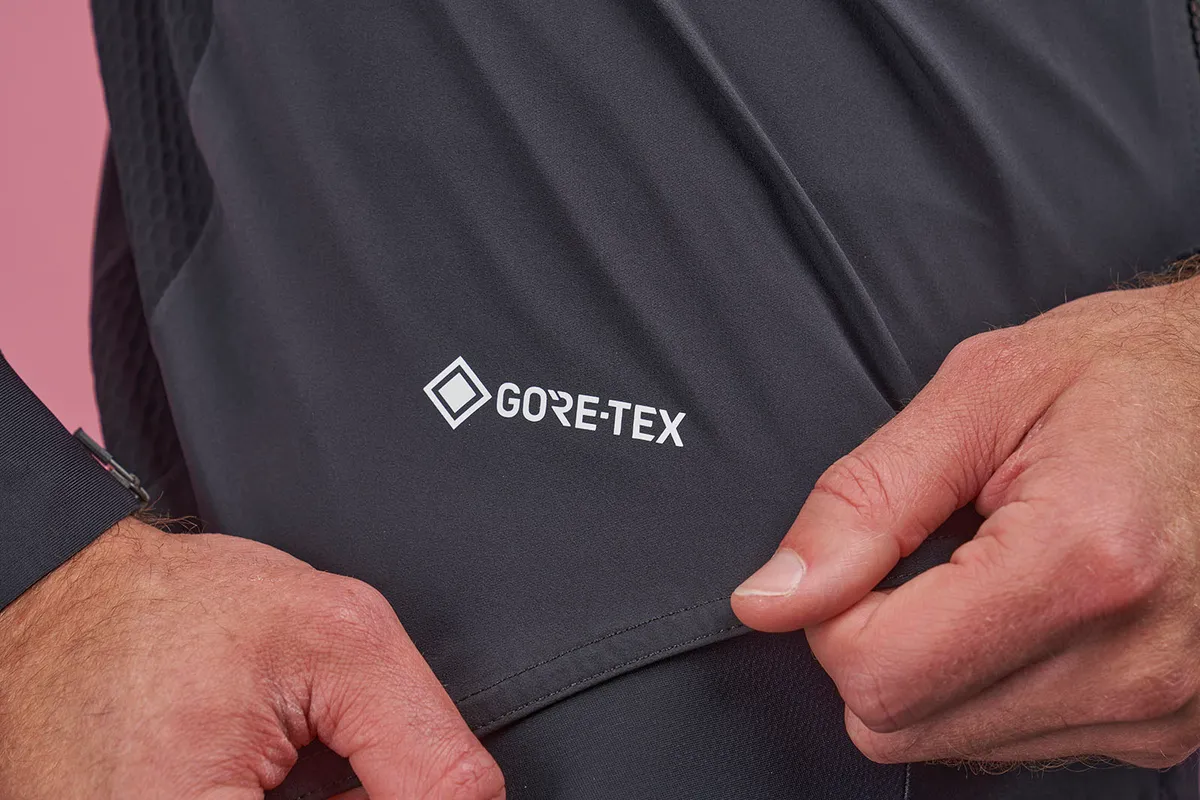
As soon as it rained, the moisture I was generating couldn’t escape as easily – so my baselayer got far wetter. This is exacerbated by milder temperatures, or if you’re working hard.
This is all while the fabric and its Durable Water-Repellent (DWR) treatment are doing a good job of keeping rain water out.
In the worst-case scenario, during a warm and dry spell in between showers, a breathable, waterproof jacket may allow heat and moisture to build up inside to the point of you looking like you’ve just been swimming.
This is especially true if the DWR treatment on the outer surface has been overcome with moisture and has ‘wetted out’.
Even Gore-Tex Shakedry, which had been heralded as something akin to a ‘miracle fabric’, couldn’t overcome these laws of physics.
Having said all this, when used in the right conditions, waterproof jackets can keep water off and breathe well once they’ve dried. But expecting them to ‘do it all’ at the same time is a step too far.
2. Sweat the details – you’ll thank yourself later
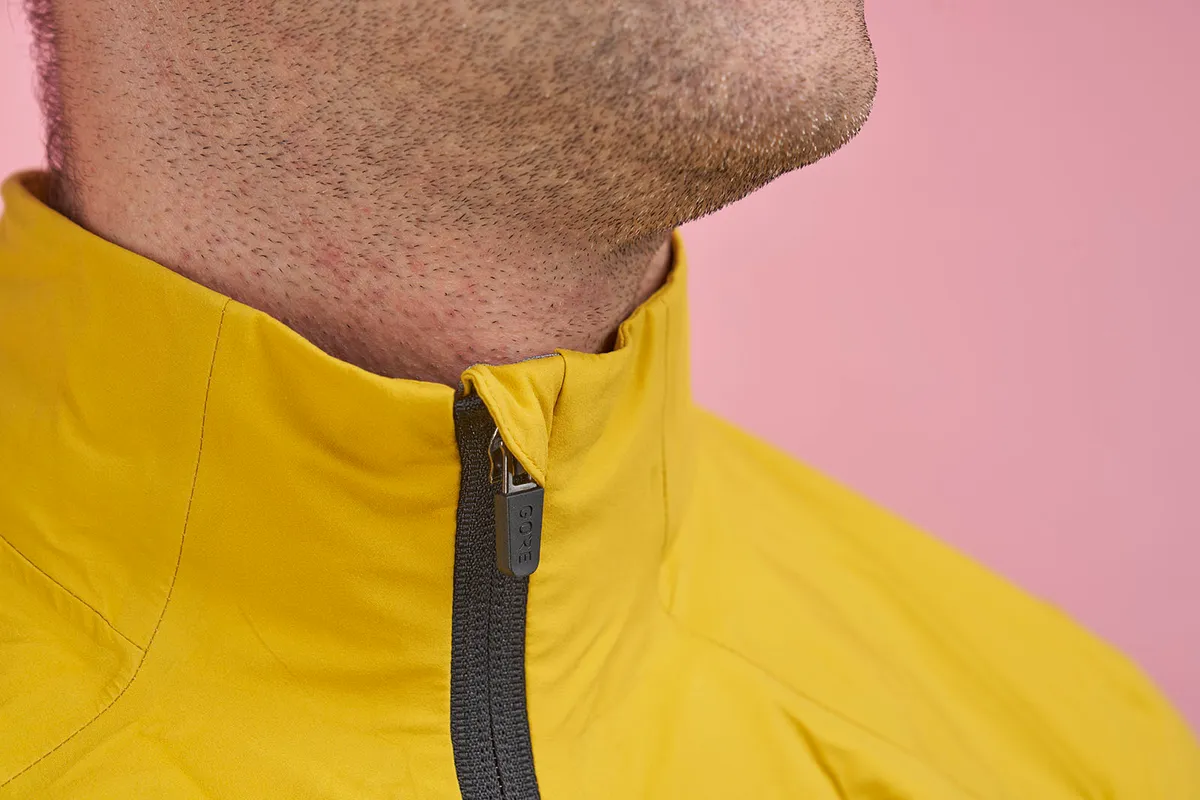
The worst waterproof jacket is one you don’t want to wear.
No matter how technical the fabric or how highly rated the garment in question might be, if it doesn’t meet your needs, you won’t wear it.
The jacket’s fabric, fit and packability are usually front of mind for any cyclist. But waterproof jackets can easily cost upwards of £250, so it's worth considering the following factors:
- A zip garage to stop under-chin rubbing
- How easy the zipper is to pull with one hand
- Pockets for storage
- Ease of access to jersey pockets
- Banded or tailored cuffs, which can impact comfort and sealing
- Colour or presence of reflective details for visibility
For me, there are precious few jackets that manage to tick most of these boxes – let alone all of them – so an element of compromise is usually required to find the best jacket for me.
Once you’ve arrived at the jacket that offers the best combination of features for your needs, this is likely going to be the best jacket for you – even if that means sacrificing something along the way.
How do you know what you need before you buy it? As always, consider the things you like and dislike about your other pieces of cycling kit, and the kind of riding you plan to do.
Once you’ve done that, heading to a local bike shop to try some on, or shopping with an online platform with a good returns policy, is critical.
3. Only wash waterproofs when you have to
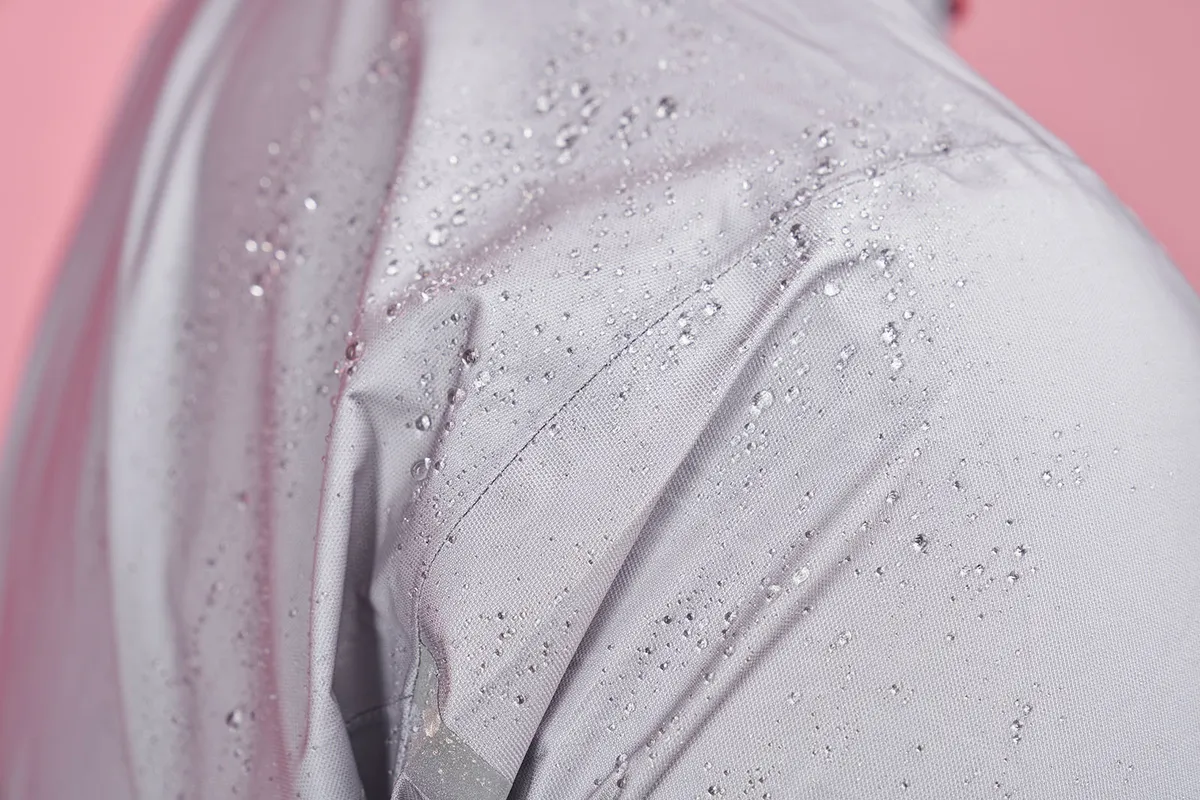
Given the investment involved, we all want our waterproof jackets to last and perform well for years. Inevitably, this means caring for them properly.
Every brand carries slightly different care recommendations – be it wash temperatures, cycle types or drying recommendations. In the case of Gore-Tex Shakedry fabrics, we’re often instructed only to rinse them off.
Keeping technical fabrics clean will ensure the best performance because dirt can block the micro-pores that allow moisture to escape.
However, overwashing them can cause the DWR treatment to wear out and damage the technical layers of fabrics and all-important protective membrane.
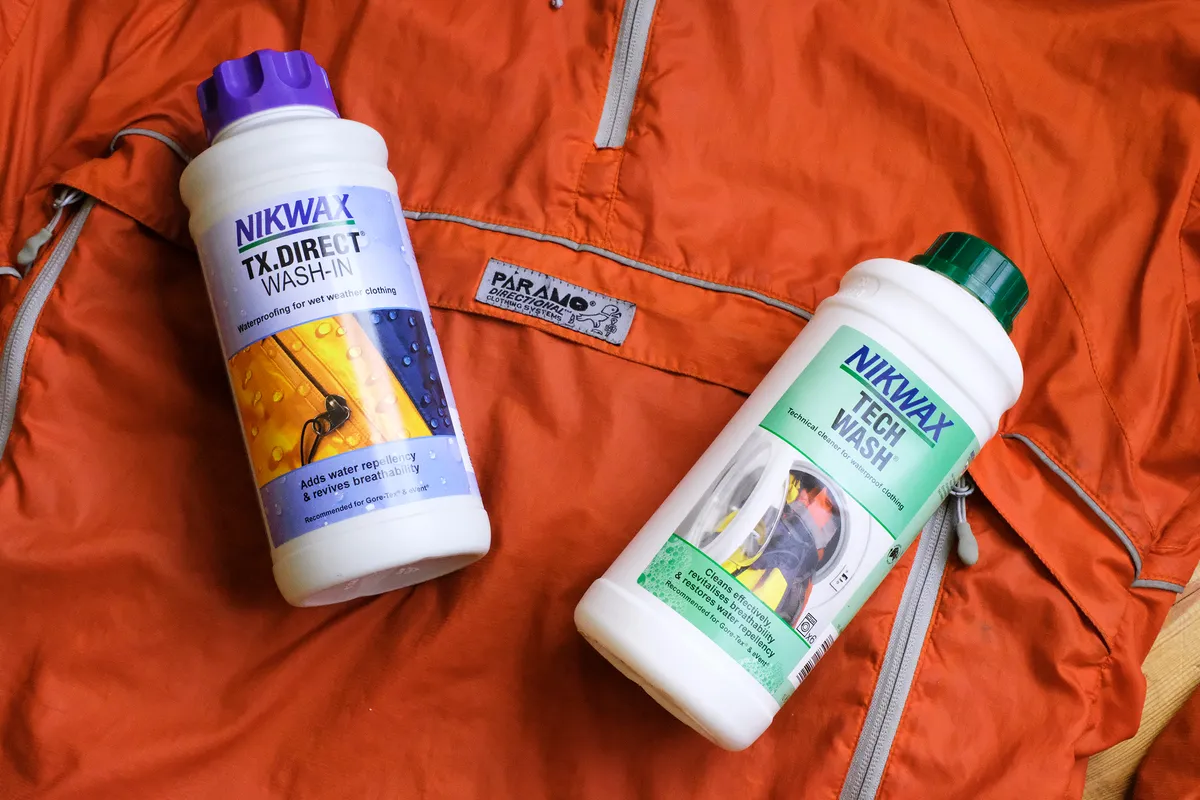
As a result, even if your jacket has been subjected to showers and rainy rides, you probably won’t need to wash it until it stops beading water off effectively.
Once this occurs, a technical washing product is best used because they're free from the chemicals and enzymes used in ordinary detergents, which can break down DWR treatments and waterproof fabrics faster.
When testing jackets, I wash them more than necessary to expose the fabric to a greater degree of wear. However, it’s best to avoid doing this with your jacket.
4. Waterproof jackets can double as wind jackets
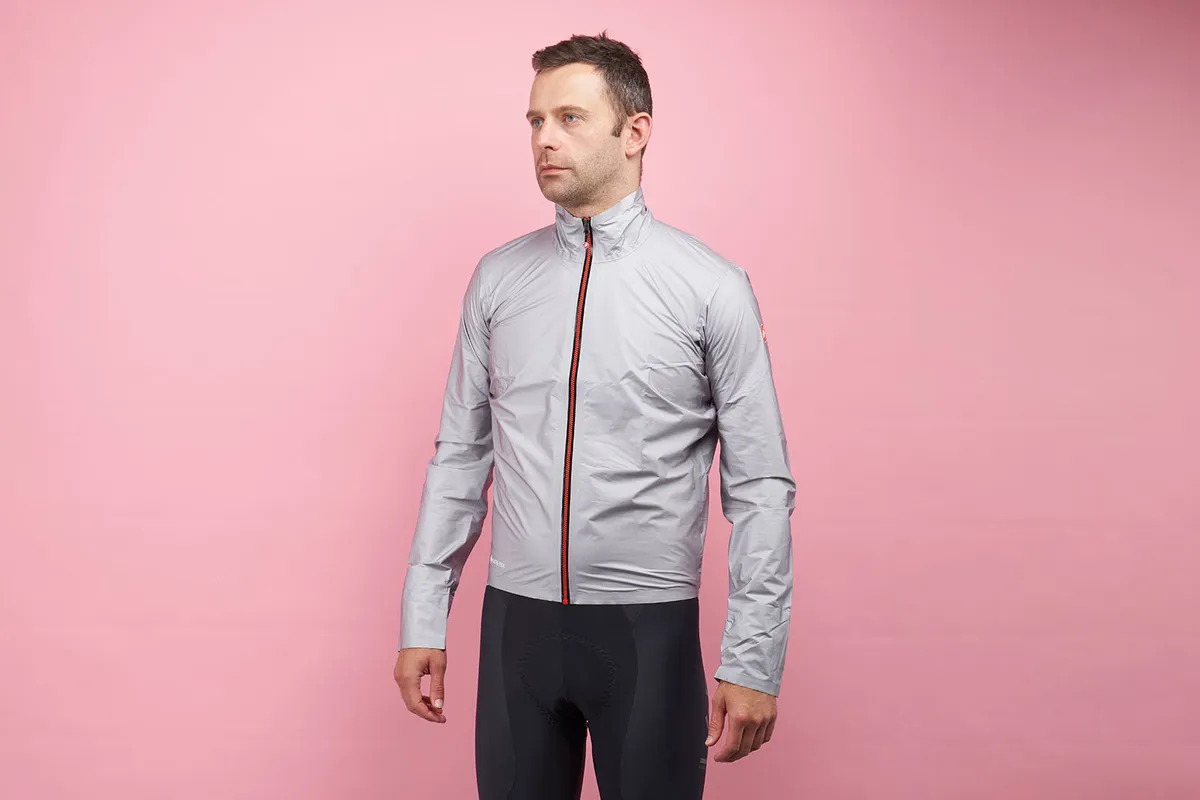
While testing waterproofs this year, I’ve also ridden them in dry weather to better test breathability.
During one such ride, it occurred to me: why should anyone bother spending money on both a waterproof and windproof jacket?
Windproof jackets do what they say on the tin: they protect you from the wind, but they usually also come with less water protection, typically in the form of a DWR treatment.
Waterproofs are naturally more focused on protection from rain, but they offer that important barrier against cold winds, too.
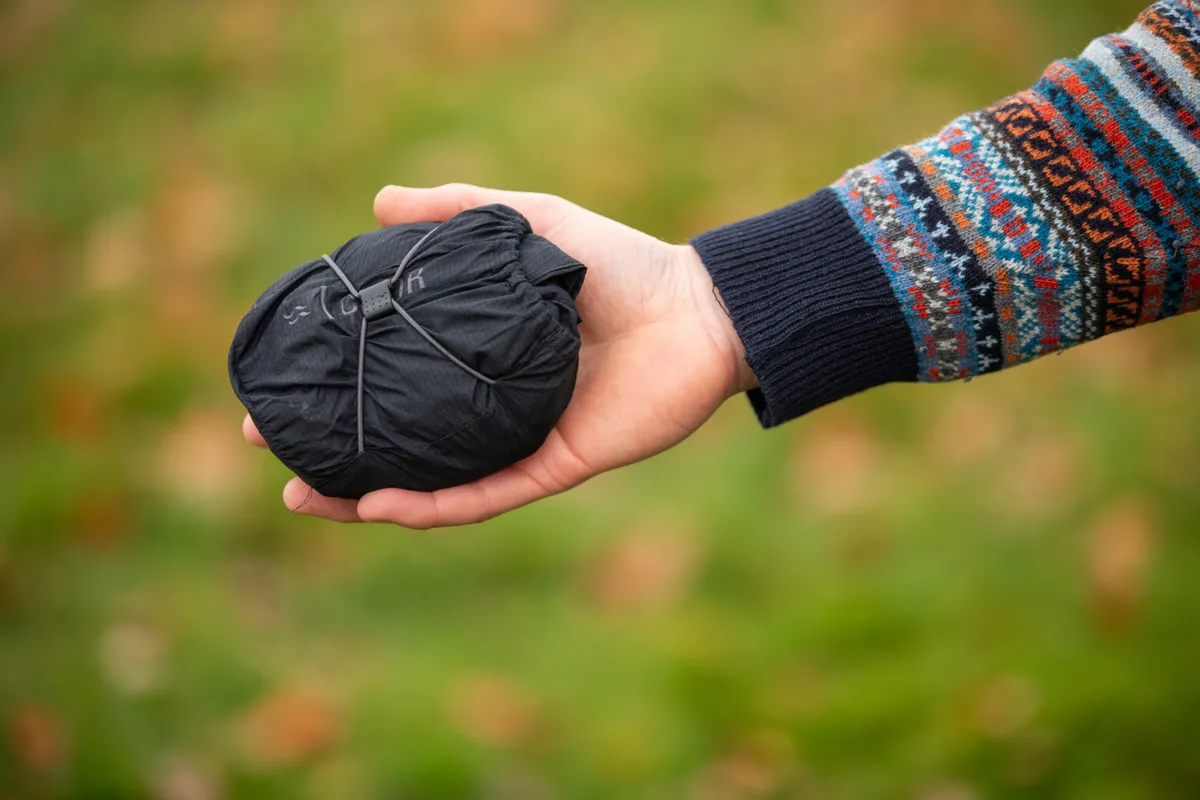
If you have a limited budget, it’s a safer bet to invest in a truly waterproof jacket, than to feel limited by the waterproof capabilities of a windproof.
Yes, windproofs are often more packable, but many waterproof jackets I’ve tested this year can pack down small enough to fit into a larger jersey pocket.
Windproof jackets, with their simpler constructions, also tend to be cheaper. However, it won't feel like money well spent if you're soaked through on too many rides.
If you’re frequently riding in cold and showery conditions, a waterproof jacket can do everything a windproof can, yet offer better protection from the elements when things take a turn for the worse.
5. Coverage is key
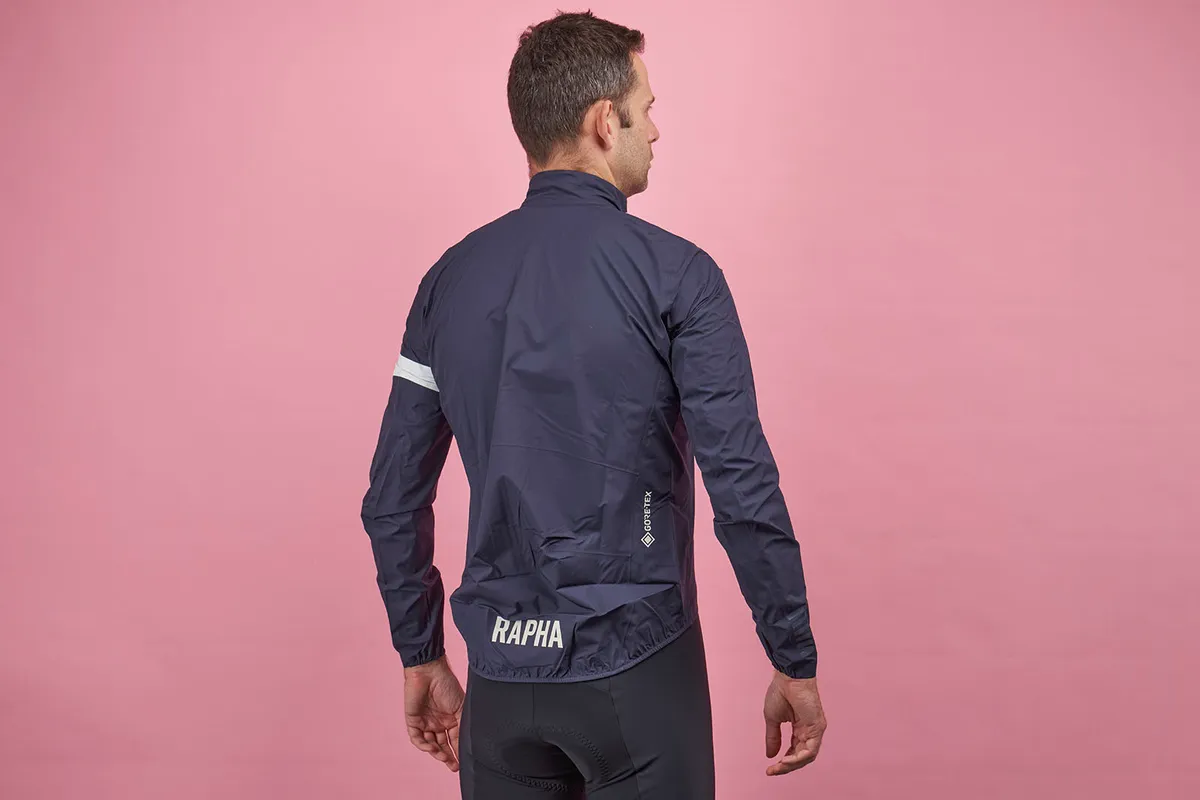
Coverage is key when choosing a waterproof cycling jacket.
A dropped tail can offer welcome added protection for your backside when riding in the rain without mudguards.
Cuffs that extend beyond the wrist a little can also be a boon. They offer a greater overlap with winter gloves.
A taller, shaped collar can keep sneaky drips from your helmet at bay, as well as help you feel more cocooned from the conditions.
Shortcomings in coverage can limit the utility of a waterproof jacket at times, while exposed skin is simply unpleasant.
As always, the best thing is to try before you buy, simulating your usual riding position to ensure you get the coverage you need.
6. Buy the waterproof that suits your riding habits
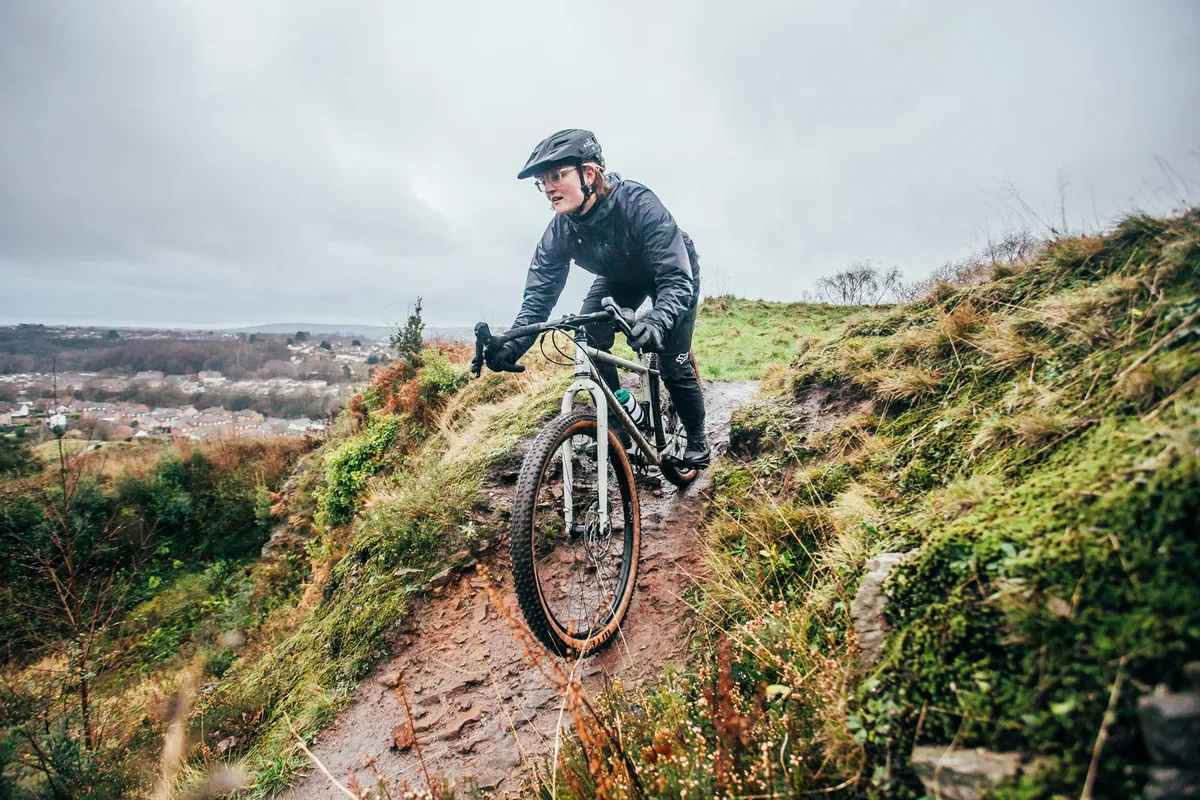
Stepping away from the road or trail for a moment, if you’re planning on using your waterproof jacket for an urban ride with your everyday clothes on underneath, you’ll likely want them to remain completely dry.
In this situation, a racy waterproof jacket design is unlikely to meet your needs.
A waterproof jacket designed with one eye on urban riding will usually feature a longer-cut front for added protection for the (usually) less aggressive riding positions, and occasionally an extendable tail.
You might also find a baggier fit advantageous, given the extra space this affords for clothing underneath.
A slim cut can improve aerodynamics, but unless your goal is speed, you may find a relaxed jacket more comfortable. This is especially true if you ride an endurance or gravel bike, where the riding positions are more upright than road race bikes
The best waterproof jackets for mountain biking also typically come with hoods big enough to be worn over your helmet – a feature often overlooked by road cyclists looking for something sleek, aerodynamic and lightweight.
Ultimately, we can become enticed by specific performance features, cuts and the most 'high-tech’ fabrics, but these can come at the cost of real practicality.
